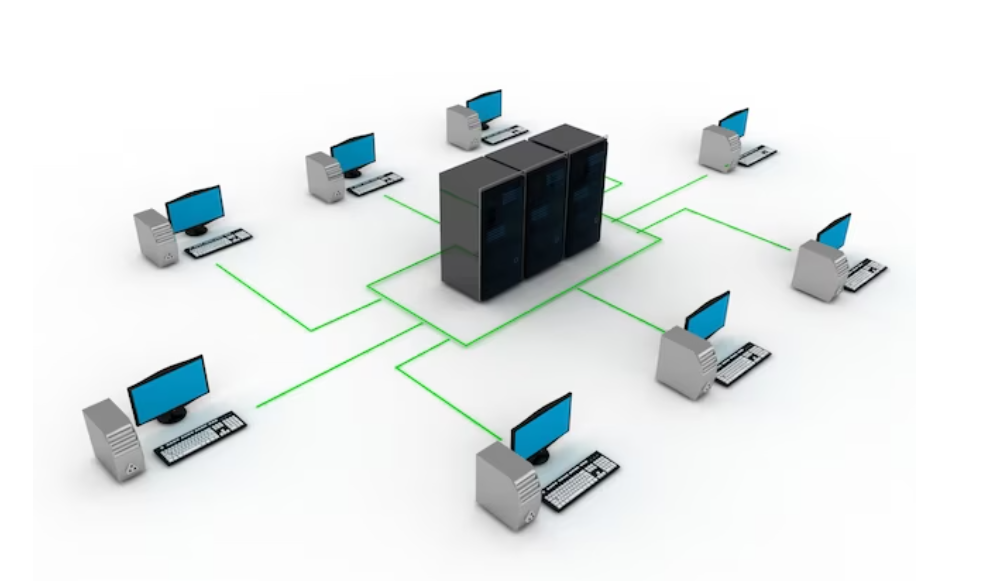An Overview of Computer Networking
A crucial component of contemporary technology that enables device communication and information sharing is computer networking. Anybody working in the technology industry has to grasp the fundamentals of computer networking, regardless of the size of the network—whether it’s a tiny home network or a massive business network.
Importance of Understanding Computer Networking
Anyone who wishes to work with computers must grasp the foundations of computer networking. The technique of linking many devices to exchange data and resources is known as computer networking. This enables communication between devices located in various places and may be accomplished via wired or wireless connections.
The Complexities of Computer Networking
The area of computer networking is intricate and demands a firm grasp of the fundamentals. This entails having an understanding of network design, security, and protocols. Comprehending these ideas is essential for resolving network problems and guaranteeing the security and dependability of networks.
Crucial Role of Computer Networking in Modern World
Computer networking is more crucial than ever in the modern world. Networks are becoming increasingly intricate and linked as cloud computing and the Internet of Things gain traction. Therefore, having a solid foundation in computer networking fundamentals is crucial for everyone working with computers. People may more easily negotiate the intricacies of contemporary networks and make sure they can share resources and connect with others by grasping the foundations of computer networking.

importance of Networking on Computers
Networking on computers is essential. Computer networking makes it possible for many devices to share resources like files, printers, and internet connections. It also makes it easier for gadgets to communicate with one another, which lets people connect and work together. Computer networking has become essential for both people and organizations in today’s linked society.
Understanding Computer Network Components
A computer network is made up of several parts that cooperate to provide resource sharing and communication. These elements consist of:
Devices:
These are the actual hardware components that make up the network, including servers, switches, routers, laptops, PCs, and cellphones.
Network Interface:
A network card or wireless adapter may serve as a device’s network interface. Every device connected to the network has one. It enables the device to establish a network connection.
Media:
The physical medium used to transfer data, such as Ethernet cables, fiber-optic cables, or wireless signals, is referred to as the “media.”
Protocols:
On a network, protocols are a collection of guidelines and conventions that control device communication and data transmission. Protocols include HTTP, DNS, and TCP/IP, as examples.
Computer Network Types
Computer networks come in a variety of forms, each with a distinct function.
Local Area Network (LAN):
A LAN is a network that links devices in a constrained space, such as a house, workplace, or educational institution. It makes it possible for devices to share data and resources.
Wide Area Network (WAN):
A WAN links many local area networks (LANs) together across a significant geographic region. One of the best-known examples of a WAN is the internet.
Metropolitan Area Network (MAN):
MANs are smaller than WANs but span a wider region than LANs. Usually, it links many LANs together within a city or other large metropolitan region.
Wireless Networks:
Wireless networks link devices without the use of physical wires by using wireless signals like Bluetooth or Wi-Fi.
Topologies of Networks
The configuration of links and devices inside a network is referred to as its topology. Several typical network topologies consist of:
Star Topology:
A central device, such as a switch or hub, is linked to every device in the topology. This central device regulates the flow of data between devices.
Bus Topology:
All devices in a bus topology are connected by a single cable known as a bus. Every device listens to the bus for data meant for it, and data is transferred along the bus.
Ring Topology:
Device connections in a ring topology are made in a circular pattern. Data moves through each device in the ring in a single path until it arrives at its final destination.
Mesh Topology:
Every device in the network is linked to every other device in a mesh topology. Strong fault tolerance and dependability are offered by this redundancy.

Cybersecurity on the Network
One essential component of computer networking is network security. It entails putting policies in place to guard against illegal access, data breaches, and other security risks, as well as to safeguard the network and its resources. Typical methods for securing networks include:
Firewalls:
Filtering incoming and outgoing network traffic according to predetermined security criteria, firewalls serve as a barrier between internal and external networks.
Encryption:
Encryption ensures the security of data transmitted over a network by converting it to an unintelligible format that can only be decoded by authorized recipients.
Authentication:
Before allowing access to a network, authentication measures like passwords, biometrics, or digital certificates confirm the identity of users and devices.
Intrusion Detection Systems (IDS):
IDS notifies network managers of possible security breaches and keeps an eye on network traffic for unusual activities.
Modern Communication and Computer Networking
Modern communication is built on computer networking. It is the process of joining two or more computers so they can talk to one another and exchange data. A variety of physical mediums, including wire, radio waves, microwaves, and infrared light, may be used to create networks.
Fundamental Computer Network Components
While computer networking is a broad and intricate topic, everyone working with technology has to grasp the fundamentals. Gaining knowledge of computer network components, kinds, and topologies, along with network security methods, will help you establish a strong basis for further research and specialization in this dynamic sector.
It’s critical to comprehend the elements of a network in order to grasp the fundamentals of computer networking. The network’s three essential components are:
Computers:
As the nodes that provide communication inside a network, computers are its central component. An IP address is used to identify each machine on a network.
Network Interface Cards:
In order for a computer to connect to the rest of the network, it needs a Network Interface Card (NIC). The NIC enables data transmission and reception on the computer, in addition to resource management and monitoring.
Network Protocols:
The guidelines that control computer communication on a network are known as network protocols. Common protocols include Ethernet, Wi-Fi, and TCP/IP.
Computer Network Types
Depending on the network’s size and location, different computer networks have different sorts. Typical network types include the following:
Local Area Networks (LANs):
A LAN is a kind of computer network that is restricted to a small area, such as a house, an office building, or a school.
Wide Area Networks (WANs):
A WAN is a kind of computer network that extends across a greater region, such as a whole nation, state, or city. Typically, telecom corporations are the ones that establish it.
Metropolitan Area Networks (MANs):
A computer network encompassing a city or metropolitan region is known as a MAN. Large corporations or telecom providers usually maintain it.
Wireless Local Area Networks (WLANs):
WLANs are a kind of wireless computer network that links computers and other devices in a constrained space.
Virtual Private Networks (VPNs):
VPNs are private, secure internet connections that connect computers and other devices.
An important component of contemporary communication is computer networking. It is widely used in both corporate and personal applications, enabling computers to exchange data and interact with one another. Gaining an understanding of the fundamentals of computer networking will enable you to use networks more efficiently and solve issues more rapidly.

